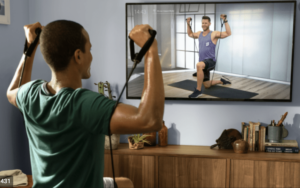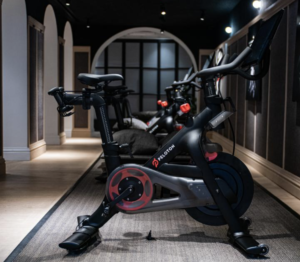No matter how much rugby may have evolved, with the game nowadays requiring players to be multi-skilled and able to perform a variety of roles on the field, every player has a diverse range of needs – and today’s rugby boots cater to specific positions on the pitch.
Wings and Fullbacks

Puma EvoSPEED
Competitor Nike has its own ‘speed boot’ the Mercurial Vapor, which has been sported by the World Cup winning Sonny Bill Williams, while Puma have the EvoSPEED, a lightweight boot which is robust enough to be worn by the forwards as well.
Centers

Nike Tiempo Legend IV
The RS7 III is Adidas’ response to the Tiempo, with the likes of Ma’a Nonu and Welsh star Alex Cuthbert flying the flag for the German company.
The synthetic print on the ‘kicking zone’ of the boot was designed specifically with midfielders in mind, who are often called on to provide back-up to the inside backs when it comes time to put boot to ball.
Scrum-Half and Fly-Half
In the halves, world-record points scorer Dan Carter had input in to the development of Adidas’ Predator Incurza, one of the most technologically advanced boots ever made.

Adidas Predator Incurza
An adjustable lacing system that increases the surface area, and duel kicking zones, the ‘Sweet Spot’ and the ‘Precision Zone’, enhance a player’s ability to generate power and accuracy.
Nike’s CTR360 Maestri III is a versatile boot favoured by the likes of Alex Goode, while France’s Francois Trinh-Duc prefers Puma’s Powercat 1.12.
Flankers and #8
A number of loose-forwards, most notably Ireland’s Jamie Heaslip, have donned the lightweight Puma EvoSPEED at international level, testament to Puma’s ability to create a boot which is robust enough to cope with the rigors of forward play whilst still being primarily built for speed.
All Black captain Richie McCaw had input in to Adidas’ R15 II, a boot which utilizes lightweight Taurus leather, a one-piece outsole and newly developed studs, and which is ideal for loose forwards.
Front Row and Locks
In the ‘dark-room’ where the tight forwards ply their trade, the Adidas Kakari has proven incredibly popular since their release mid-way through 2012, having been adopted immediately by leading All Blacks including Owen Franks, Tony Woodcock, Keven Mealamu and Sam Whitelock.
South Africa’s Tendai ‘The Beast’ Mtawarira and Ulster’s John Afoa have worn the forwards’ version of the Powercat, the 3.12, while the Lethal Warno, produced by Asics, is also a favourite of the big men on the field.
Rugby 7s
In the condensed version of the game that is 7s, players require a boot that is both strong yet light. Puma’s EvoSPEED is a great option, with it’s proven ability to mix it up at the breakdown combined with its lightweight finish making it perfect for the high-octane game of 7s.
Nike’s Tiempo Legend’s are also suited to the seven-man game, as are Adidas’ F50s and the RS7 IIIs.
Women’s Boots
There really aren’t any boots on the market made specifically for females, but this is not a problem since the criteria for choosing a pair of boots to suit your position remains the same for both men and women.
Women will have to convert to Men’s or Boy’s sizes though, and as a general rule women should add on half a size to what they normally wear, i.e. someone who wears a UK Women’s 5 will need to purchase boots in a Men’s 5.5. Click here for a full size guide.
How to Choose the Right Boots For You
When it does come time to purchase a new pair of boots, a bit of common sense always goes a long way! Make sure to do your research.
Stay focused on finding a boot which fits the needs of your individual position, rather than picking a pair simply on looks!
Consider what type of surfaces you will be playing on most often as most styles are produced in both Firm Ground (FG) and Soft Ground (SG) versions.
Wearing a pair of boots designed for use on soft surfaces that have longer studs will quickly result in sore, blistered feet if you’re playing on hard, dry grounds. Conversely, using firm ground boots with shorter, moulded studs, on soft grounds will mean sacrificing traction and stability.
Conclusion
In broad terms, if you are a back, you will want boots which are lightweight and built for speed, and depending on your role in the team, you may also require a boot which was designed with kicking in mind.
Loose forwards need to be mobile and quick around the paddock but also require stability, while tight forwards should focus first and foremost on boots which provide the most grip and traction for scrummaging and driving.








 When most people hear the word “Peloton” they think of an expensive black bike with shiny red buttons and that controversial commercial where the husband gifted his wife a Peloton for Christmas.
When most people hear the word “Peloton” they think of an expensive black bike with shiny red buttons and that controversial commercial where the husband gifted his wife a Peloton for Christmas. If the app interests you, Peloton is currently offering a 30 day FREE TRIAL, so why not give it a try? Check it out
If the app interests you, Peloton is currently offering a 30 day FREE TRIAL, so why not give it a try? Check it out 

 This article would not be complete, however, if we did not acknowledge some of the delivery issues that have been plaguing Peloton over the last year. Most of the delivery issues seem to affect U.S. deliveries, however, the UK deliveries have been affected as well.
This article would not be complete, however, if we did not acknowledge some of the delivery issues that have been plaguing Peloton over the last year. Most of the delivery issues seem to affect U.S. deliveries, however, the UK deliveries have been affected as well.







